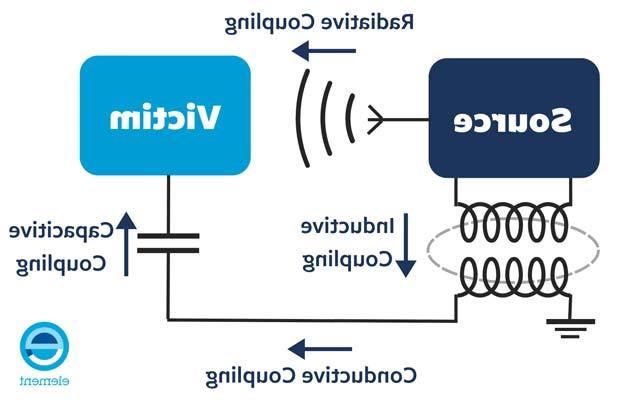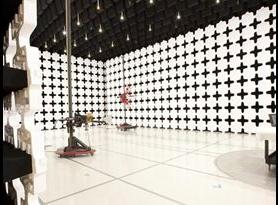EMC vs EMI 测试, What’s the Difference?

By Engaged Expert
Steve HayesSteve Hayes在产品认证im体育平台app下载拥有超过30年的经验,并在众多国家和国际标准委员会任职.
Ever wondered why terms like Electromagnetic Compatibility (EMC) and Electromagnetic Interference (EMI) are often intertwined? These two core concepts, crucial for protecting your electronic devices from interference, 密切相关-但重要的是要了解EMC和EMI是不一样的. So, what exactly is EMI, and how does it differ from EMC? In this article, im体育APP专家Steve Hayes讨论了EMC和EMI之间的关键区别,并探讨了在不同情况下哪种方法最有效地降低了风险.
What’s the Difference Between EMC and EMI?
电磁干扰和电磁兼容测试的目的是确保电子和电气设备, 系统, 设备可以在其预期的电磁环境中正常运行和共存,而不会造成或遭受不可接受的电磁干扰. These tests are crucial for various reasons:
- Ensuring products operate without interference.
- To comply with regulations and standards.
- Improving reliability and safety.
- To verify compatibility with other devices.
- Maintaining customer satisfaction.
What is Electromagnetic Compatibility (EMC)?
- Emissions: EMC考虑的是设备在运行过程中发出的电磁能量. 这包括通过空气辐射或通过电缆传导的信号.
- 免疫: On the other side of the EMC equation is immunity. 这涉及到设备在暴露于其他来源的电磁干扰下继续正常工作的能力, such as nearby transmitters or electrical equipment.
Fundamentally, 兼容性方面确保我们可以让一个电气设备与另一个电气设备近距离使用而不会产生电气干扰.
What is Electromagnetic Interference (EMI)?
电磁干扰(EMI)是由电磁干扰引起的, impacting the functionality of electronic devices. These disturbances can stem from various sources, 包括环境因素,如暴风雨或其他电子设备/系统. If the interference occurs within the radio frequency spectrum, it's commonly termed Radio Frequency Interference (RFI).
电磁干扰(EMI)可以根据其来源和特征分为几种类型. Some common types of electromagnetic interference include:
- Radiated EMI: Electromagnetic interference emitted as waves through the air, often from devices like radios or wireless routers.
- Conducted EMI: Interference conducted along wires or cables, 通常由电机或电源等电气设备引起.
- Coupled EMI: 通过电磁场从一个电路或传输线转移到另一个电路或传输线的干扰, leading to crosstalk or signal distortion.
这些类型的干扰可以破坏电子系统和通信网络, 需要屏蔽和过滤等缓解策略以获得最佳性能.

Determining Which EMI/EMC Test to Use
该设备的预期应用将决定所需测试的确切类型.
Key questions to ask are:
- Where is this product going to be used?
- With what/whom is it going to interfere?
- How will the energy travel from the product to its “victim”?
电磁活动或“能量”可以通过空气(辐射耦合)或电缆(导电耦合)到达产品的两种关键方法。. 因此,所使用的标准主要基于辐射和传导试验.
How to Design For EMI & EMC to Minimize Risk?
电磁兼容性(EMC)和干扰(EMI)都是非常重要的设计考虑因素. 如果在产品开发的初始阶段不考虑这些因素,可能会导致在后期重新设计产品以满足EMC/EMI规格测试并防止产品故障或安全风险,这需要耗费大量时间和成本.
If a product must be redesigned, 它的成本可能高得令人望而却步,而且会导致产品延迟上市,并丧失消费者信心.
Bad product design (from an EMC or EMI perspective) would be when 接地, 过滤, and shielding have not been considered. 其结果将包括在测试期间和在现实世界中出现的产品故障,这意味着产品将不可靠,不能按预期工作.
Good product design incorporates the application of basic EMC principles such as effective shielding, 接地, 滤波可以同时提高电磁抗扰度,减少电磁发射, whilst minimizing risk.
结论
了解电磁兼容性(EMC)和电磁干扰(EMI)之间的区别对于确保电子设备在预期环境中无缝运行至关重要,因为它使工程师和设计人员能够有效地管理与电磁干扰相关的风险.
而EMI关注的是电磁干扰对设备性能造成的破坏, EMC评估设备在不影响相邻设备的情况下运行的能力. 这种区别至关重要,因为它使有针对性的缓解战略得以实施.
我们的实验室和EMC测试设施持有UKAS的ISO/IEC 17025认证, NVLAP, A2LA, 或DAkkS. We're recognized by authorities like the 欧洲an EMC Directive, UK EMC regulation, FCC, 并由车辆认证机构指定为技术服务人员.
为EMC和EMI测试和合规提供建议和支持或咨询服务; please contact us. To learn more about our expertise in this field, please visit our About Us page.
Find related 资源
Are You Ready for EMC 测试?
im体育APP’s team of experts have put together an eight point checklist, 以帮助确保您为提交设备进行EMC测试做好充分准备.
More from im体育APP

EMC 测试 Services
了解im体育APP如何为RTCA/DO-160提供电磁兼容性测试(EMC)解决方案, MIL-STD-461 and Def-Stan 59-411 standards.

EMC Principles Made Easy
电磁合规性(EMC)通常被描述为“黑艺术”,但解锁它的关键是了解其基本原理. Read our article to lean more.

EMC Risk Assessments
EMC risk assessments are a combination of analysis & evaluation of potential EM hazards associated with the product & environment. Read our free guide.

Your EMC Plan and Checklist
在EMC测试之前回顾这8个关键问题将使您能够更好地为将来的测试做准备.



